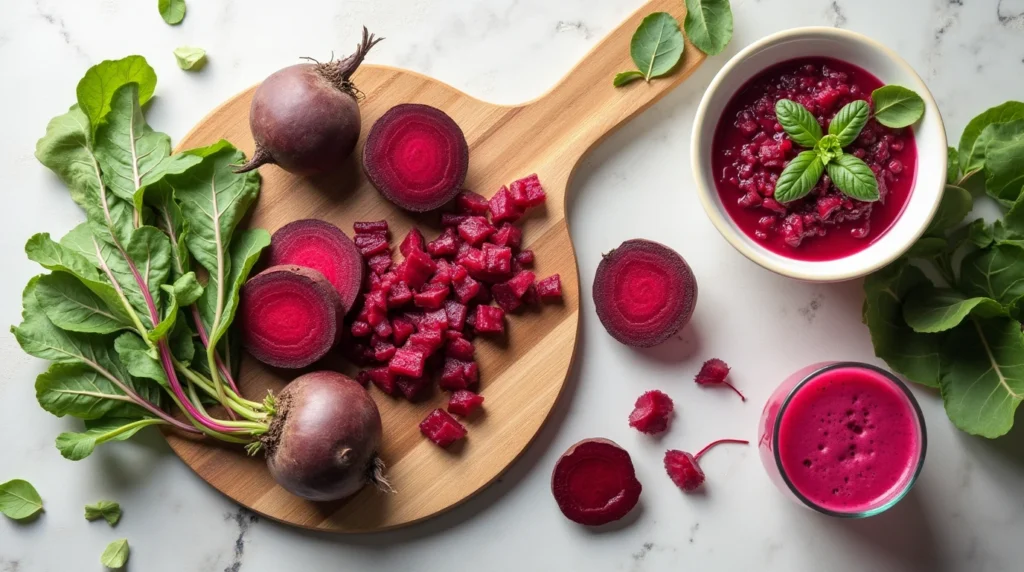The beets! 🌟 These vibrant little treasures hide a world of benefits beneath their sweet, curvy surface. They’re the star of salads, juices, and even desserts. Simple, sweet, and incredibly versatile, beets prove they’re so much more than just another vegetable. 💖
For a search on Beets, this is where you’ll find the essentials 😉
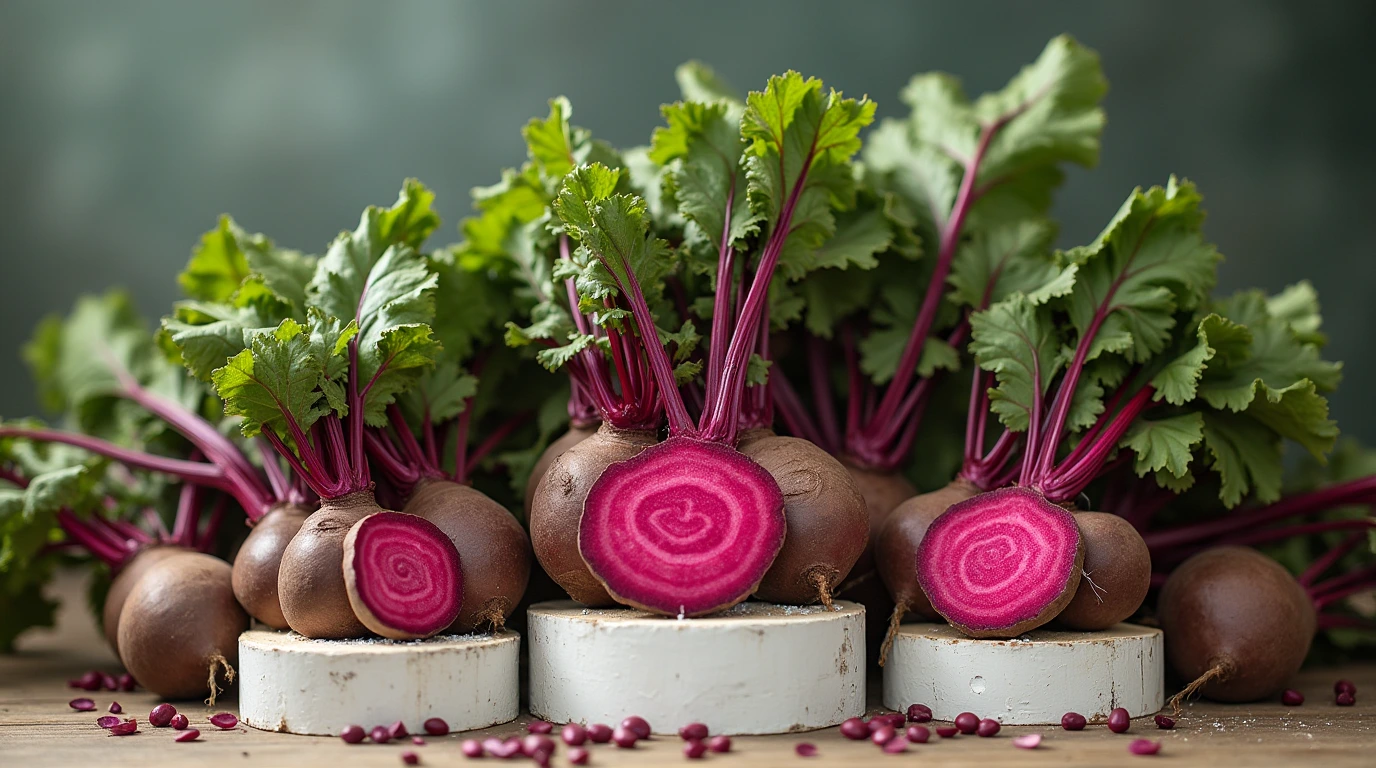
1. Health Benefits of Beets💪
The beets isn’t just a colorful delight; it’s also a health hero.
1.1 Summary of Beet Benefits
Beets are superheroes for your body. 🌟 Packed with antioxidants, they fight cellular aging and boost energy thanks to their natural nitrates. The beets are also great for digestion and help support heart health. Incorporating the beets into your diet can provide numerous health benefits, making them a valuable addition to any meal. Their vibrant color and sweet taste make the beets a delightful and nutritious choice. 💪❤️
1.2 Nutrition Facts of Beets
| Nutrient | Amount per 100g | Health Benefits |
|---|---|---|
| Fiber | 2.8 g | Promotes healthy digestion. |
| Vitamin C | 4.9 mg | Strengthens the immune system. |
| Iron | 0.8 mg | Combats fatigue and anemia. |
| Antioxidants | Present (Betalains, Phenolic compounds) | Protects cells from oxidative stress. |
For more details on Beets, see Link to Full Nutrient Report of USDA Database entry
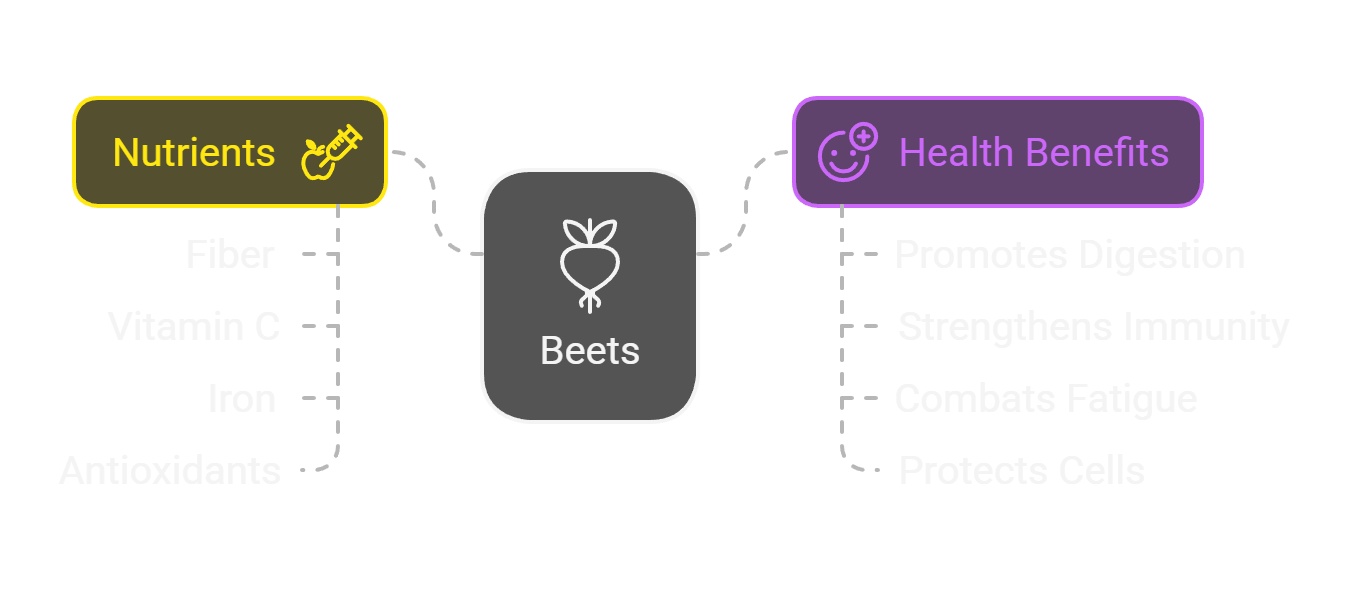
2. The Beets: Delicious Recipes to Try Today🍽️
- Beet and Goat Cheese Salad: Fresh and flavorful, perfect for a light lunch. 🥗
- Beet Soup: A pink, creamy, and comforting velvety dish. 🍵
- Beet Brownies: Yes, they even sneak into desserts for an original twist! 🍫
- Chocolate and Beetroot Cake: The chocolate and beetroot cake is a surprising dessert that combines the sweetness and moisture of beetroot with the richness of chocolate.
3. Practical Tips About Beets 🛒
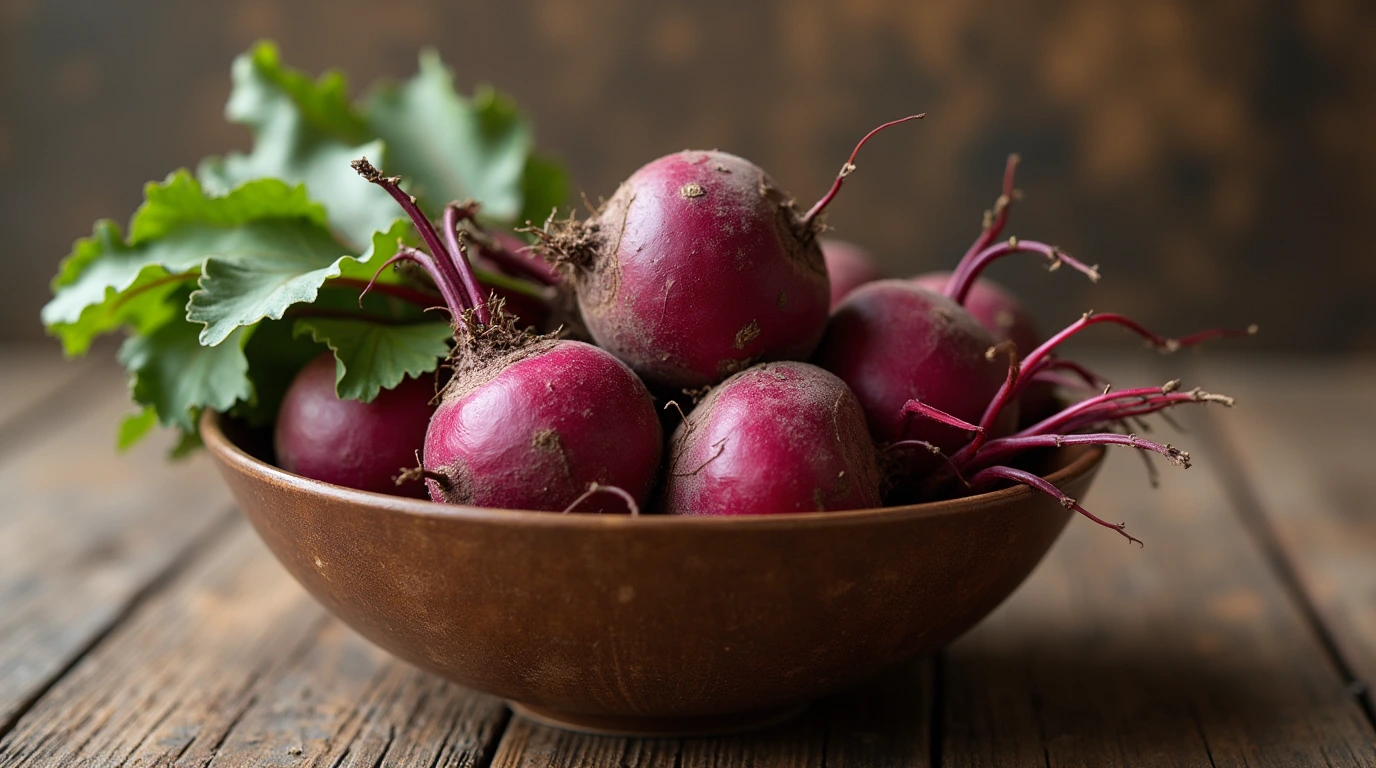
3.1 Tips for Buying Beets
Choose firm beets with smooth, unblemished skin. Bright green leaves are a sign of freshness! Avoid soft or damaged ones. 🌿
3.2 Tips for Storing Beets
Keep them in the fridge’s vegetable drawer, where they can last up to two weeks. If you’ve cut off the leaves, store them separately to cook later. 🌱
3.3 Preparing Beets
- Wash thoroughly and peel them either before or after cooking, depending on the recipe. Wear gloves to avoid pink-stained hands! 🧤
4. Preferred Cooking Methods for Beets
- Roasted: Enhances flavors with a touch of honey. 🍯
- Steamed: Retains all the nutrients. 🌡️
- Raw: Grated into salads for a crunchy touch. 🥗
5. Substitutions and Alternatives for Beets
No beets on hand? Swap them with carrots for a similar texture or radishes for a slightly spicier taste. If you’re looking to maintain the unique flavor profile of the beets, consider using turnips as a close alternative. Turnips can provide a similar earthy taste that the beets are known for. Additionally, you can experiment with red cabbage, which can offer a comparable color and crunch. For a sweeter option, try using sweet potatoes, which can complement many dishes where the beets are typically used.
6.Fun Facts and Kids’ Trivia About Beets
Did you know that in ancient times, Romans used beets to treat headaches? 🏺 The beets have a long history of medicinal use, making them a fascinating vegetable to explore. And their juice is like a magic pen to draw hearts on your plates. ❤️👩🎨 Kids love using the vibrant color of the beets to create fun and edible art projects. Additionally, the beets are a great source of natural dyes for crafts and can even be used to color Easter eggs!
7.Inspiring Legend About Beets
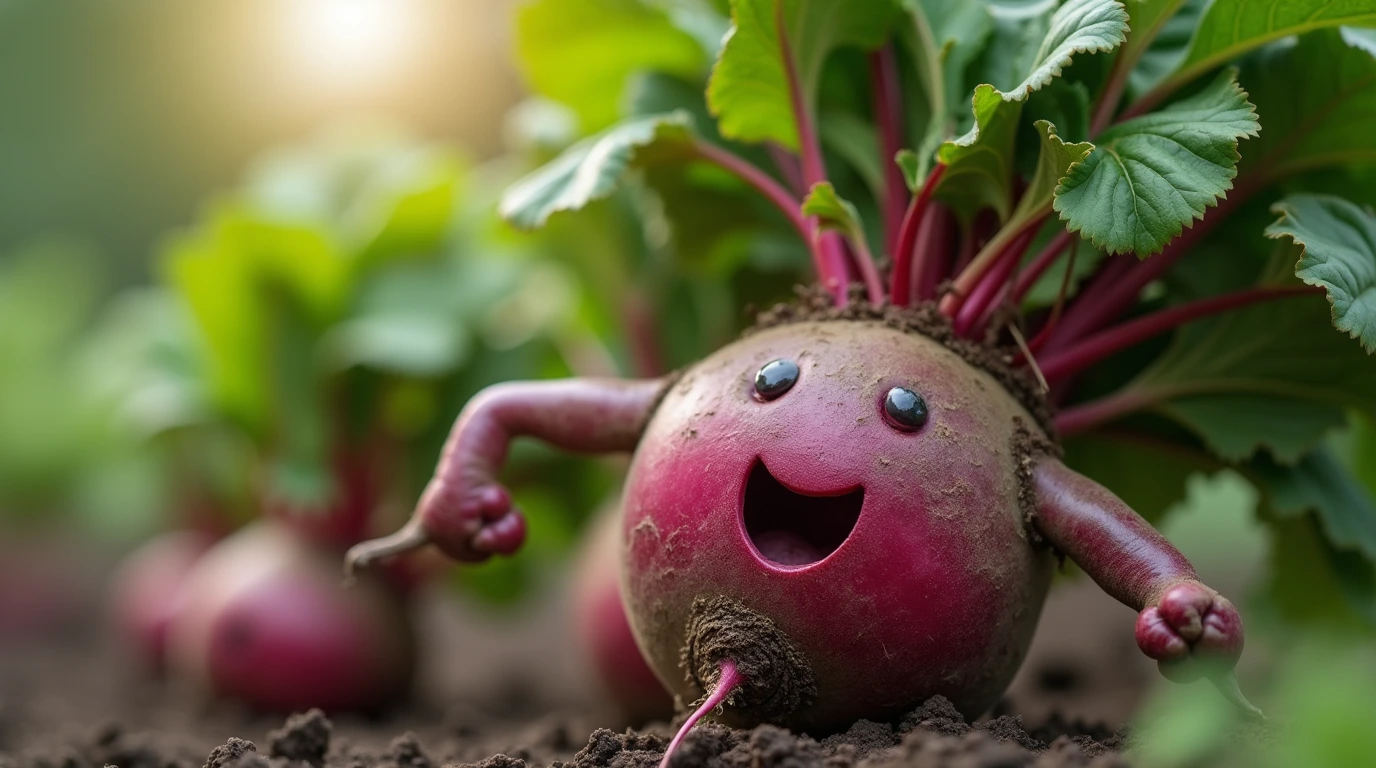
Once upon a time, in a vast and vibrant garden, there grew a small, shy beetroot. Hidden beneath the soil, it longed to be seen, not for its earthy roots, but for the sweetness it harbored deep within. But no one noticed it. The other vegetables, with their bright colors and bold personalities, always took the spotlight.
One day, a wandering chef, known for his magical touch in the kitchen, arrived at the garden. As he strolled through, he sensed something extraordinary beneath the surface. Intrigued, he dug up the little beetroot and, with a gentle smile, decided to add it to a fresh salad.
As soon as the beet touched the plate, its vibrant color and sweet, earthy flavor caught the attention of everyone. People marveled at how such a humble vegetable could transform the dish. Word spread quickly, and soon the beet was loved by all, not just for its taste, but for its quiet, unexpected beauty.
The moral of the story? Sometimes, even the most unnoticed things have the power to surprise and brighten the world. ✨
8.Cultural and Culinary Origins of Beets
8.1 The Beets: Origin
Native to the Mediterranean region, beets were already adored by the Greeks and Romans. Their name comes from the Latin “beta.” 🌍 The beets have a rich history that dates back to ancient times, where they were not only appreciated for their culinary uses but also for their medicinal benefits. The beets were often used in traditional remedies and were considered a valuable crop. Over time, the beets have evolved and spread to various parts of the world, becoming a staple in many cuisines.
8.2 The Beets: A Journey Through History and Tradition
They evolved from their wild roots to become the generous plant we know today. 🌱 The beets have been cultivated for thousands of years, with their earliest records dating back to ancient Rome and Greece. Throughout history, the beets have been valued not only for their culinary uses but also for their medicinal properties. In many cultures, the beets are a staple in traditional dishes and are often used in folk remedies. Their vibrant color and versatile nature make the beets a beloved ingredient in kitchens around the world.
8.3 Characteristics of Beets
With their vibrant colors (red, yellow, or white), tender texture, and sweet taste, they’re one of a kind! The beets are not only visually appealing but also packed with nutrients. They are a great source of vitamins and minerals, making them a healthy addition to any diet. The beets can be enjoyed raw, cooked, or pickled, adding versatility to various dishes. Their unique earthy flavor and beautiful hues make the beets a favorite among chefs and home cooks alike.
8.4 How to Plant Beets
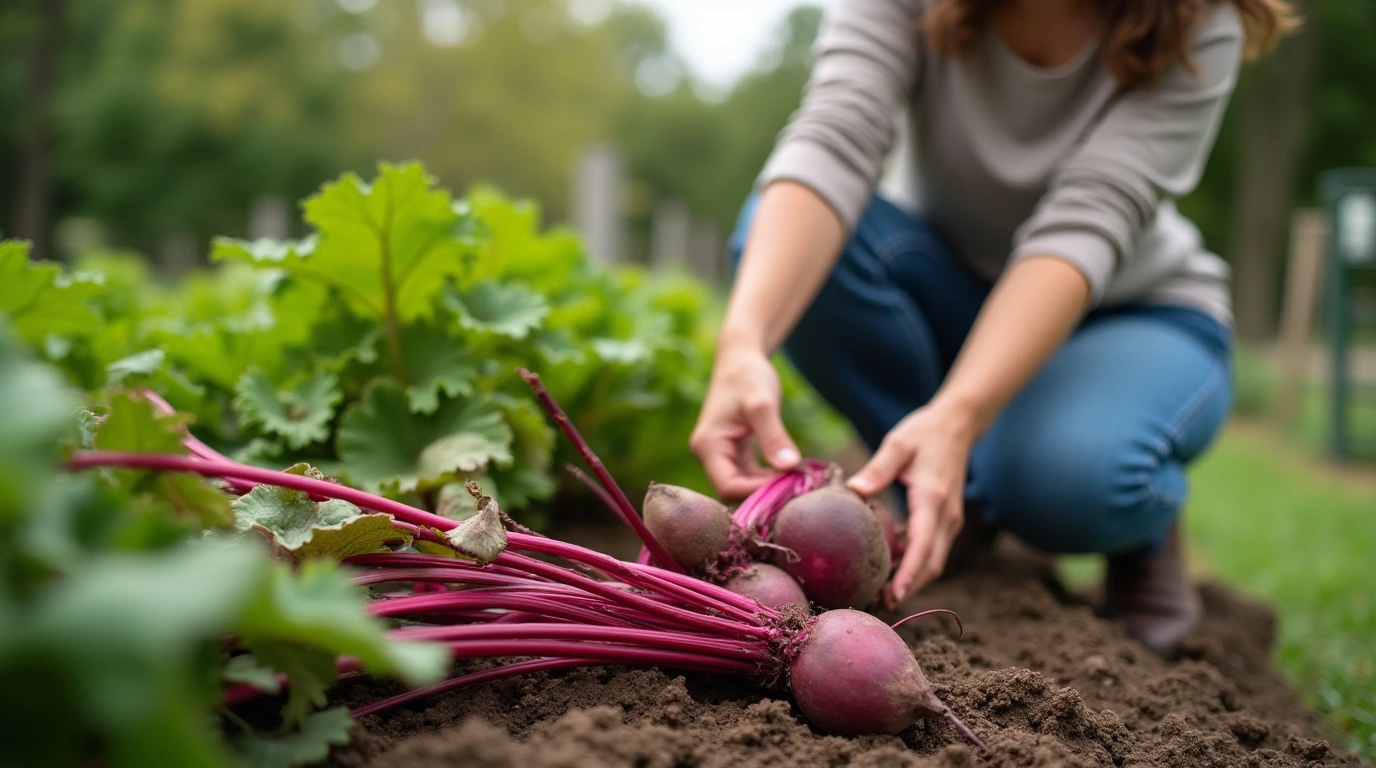
Planting beets is easy and rewarding, even for beginners! 🌱 Start by choosing a sunny spot in your garden with loose, well-drained soil, as beets thrive in light, airy earth. If your soil is heavy or clay-like, mix in some compost or sand to improve drainage and provide nutrients. Beets prefer slightly acidic to neutral soil with a pH between 6.0 and 7.5.
Sow the seeds directly into the soil in early spring, as soon as the frost has passed, or in late summer for a fall harvest. Plant the seeds about 1 inch (2.5 cm) apart and ½ inch (1 cm) deep. Rows should be spaced about 12 inches (30 cm) apart to give the plants room to grow. Keep the soil consistently moist but not waterlogged, as even moisture is key to producing sweet, tender roots. 💧
Once the seedlings sprout, thin them out to ensure there’s about 3 to 4 inches (8 to 10 cm) of space between each plant. This prevents overcrowding and allows the beets to grow to their full size.
Your beets will be ready to harvest in about 2 to 3 months, depending on the variety. For the best flavor, pick them when they’re about the size of a golf ball to a tennis ball. Don’t forget to enjoy the leafy tops too—they’re delicious sautéed or added to soups! 🌿
Happy planting! 🌾
9.Frequently Asked Questions (FAQ) About Beets❓
Can you eat raw beets?
Yes, and they’re delicious grated into salads or blended into smoothies for a sweet and earthy flavor. 🥗
How do you prevent beets from staining?
Add a splash of vinegar or lemon juice during cooking to help lock in the color. You can also wear gloves while handling them. 🧴
Are beet greens edible?
Absolutely! Beet greens are packed with nutrients and taste amazing sautéed with garlic or added to soups. 🍃
What’s the best way to cook beets to preserve nutrients?
Steaming is the best option, as it helps retain most of their vitamins and minerals. Boiling or roasting works too but may reduce nutrient content slightly. 🌡️
Why do beets sometimes make your urine pink or red?
This phenomenon, called “beeturia,” is harmless and caused by pigments in the beets. It happens to about 10-15% of people. 🩷
Can you freeze cooked beets?
Yes! Cook and peel them first, then freeze them in airtight containers or freezer bags for up to 8 months. ❄️
Are all beets sweet?
Most beets have a natural sweetness, but some varieties, like golden beets, are milder, while others may have an earthier taste. 🍠
How can I tell if a beet has gone bad?
A fresh beet should feel firm with smooth skin. If it’s soft, shriveled, or moldy, it’s time to toss it. 🛑
Can beet juice really boost athletic performance?
Yes! Beets are high in nitrates, which can improve blood flow and increase stamina during workouts. 🏃♀️
Do beets grow well in containers?
Absolutely! Choose a deep container (at least 12 inches) with good drainage. Beets are great for small-space gardening. 🌿
Your Feedback Inspires Us, Share It!
There are no reviews yet. Be the first one to write one.

